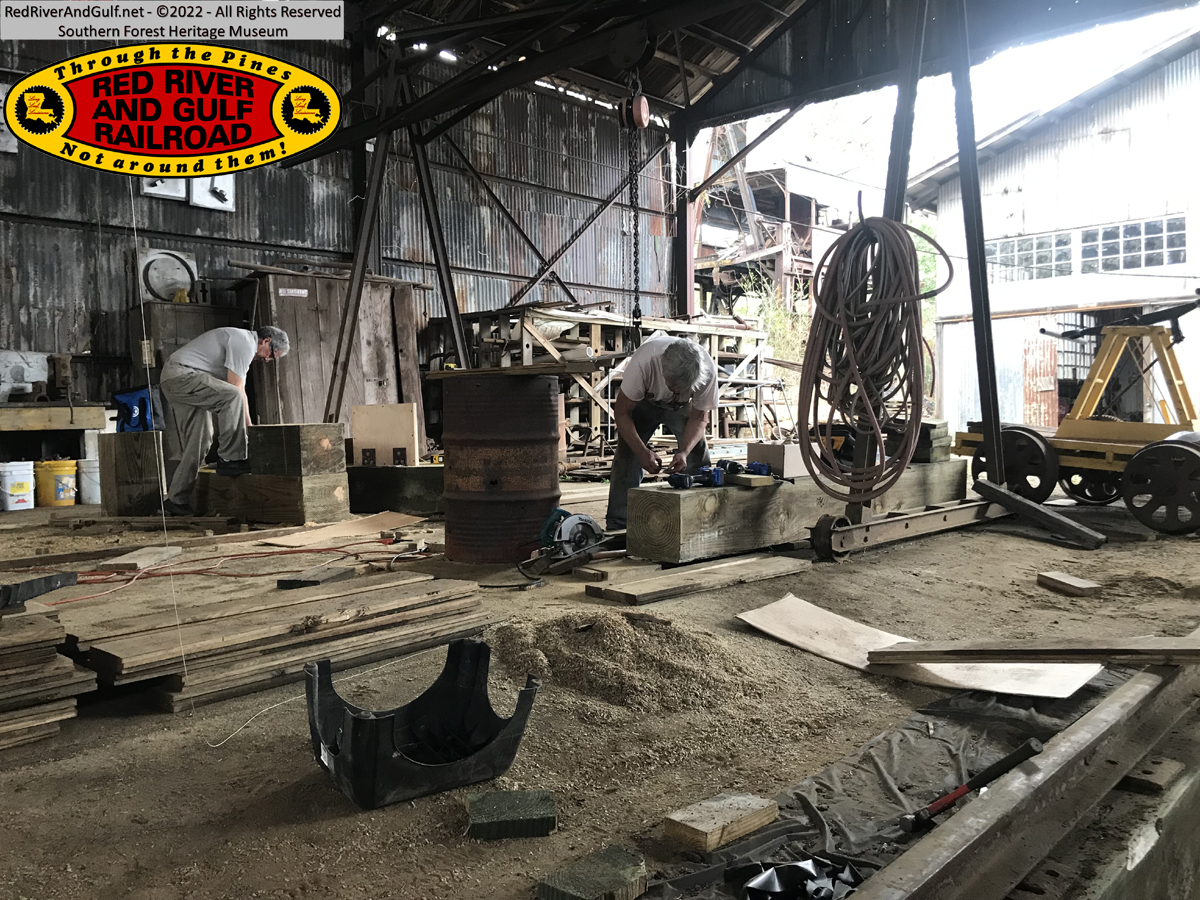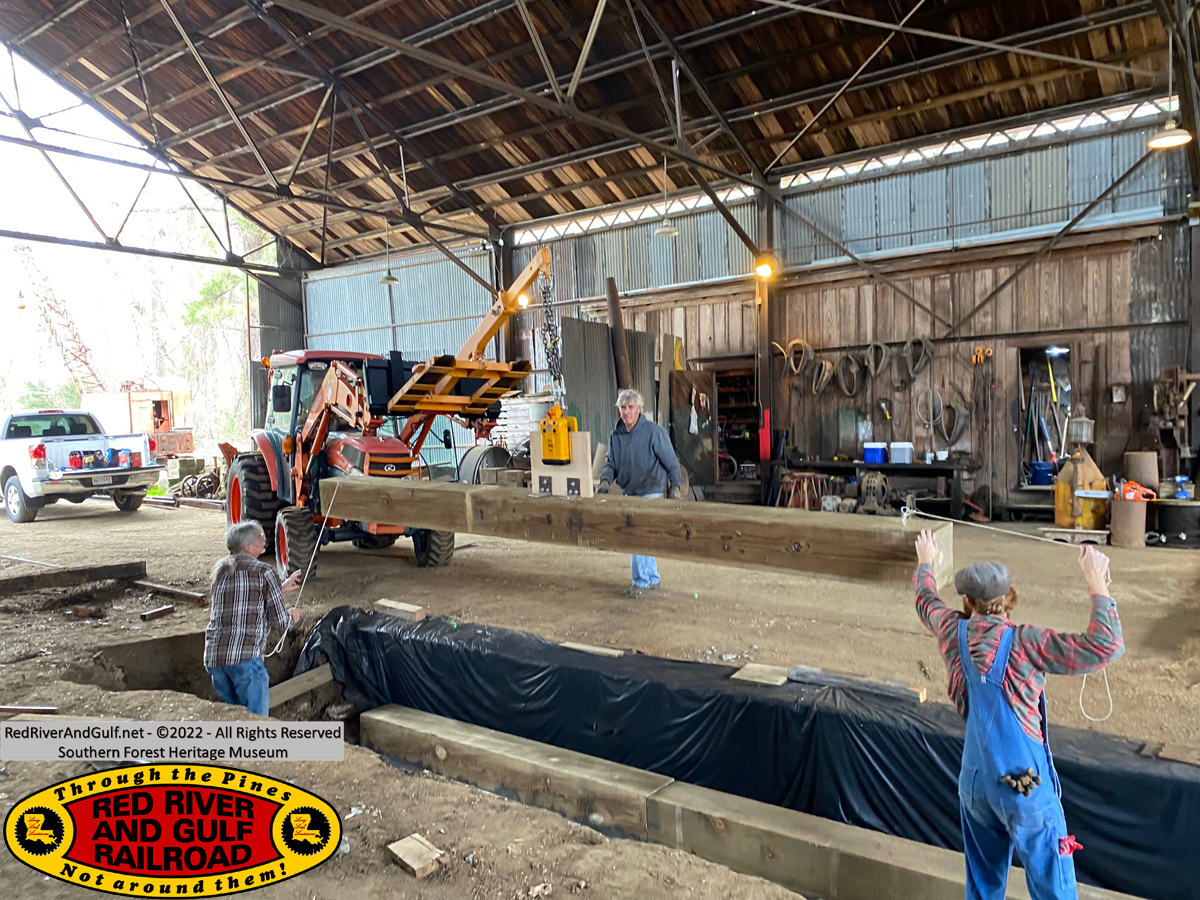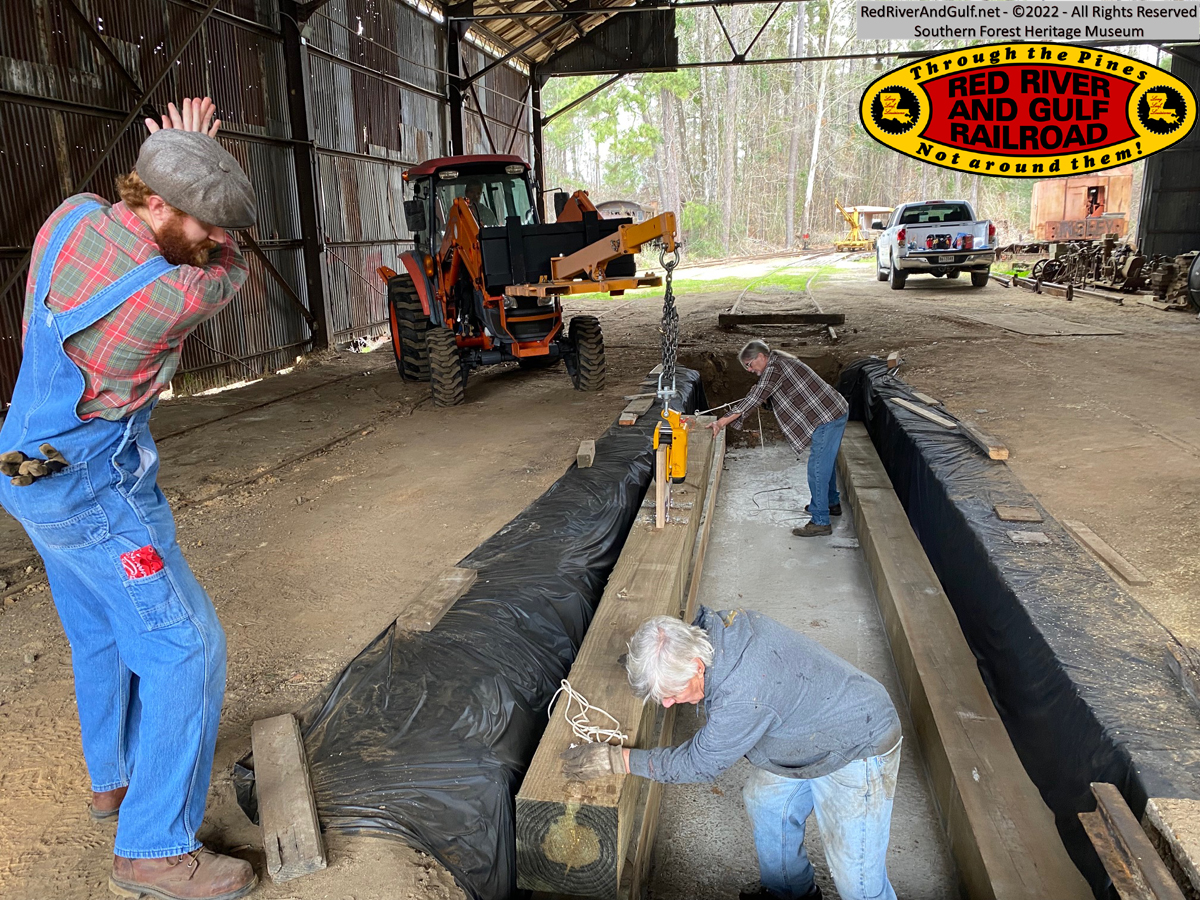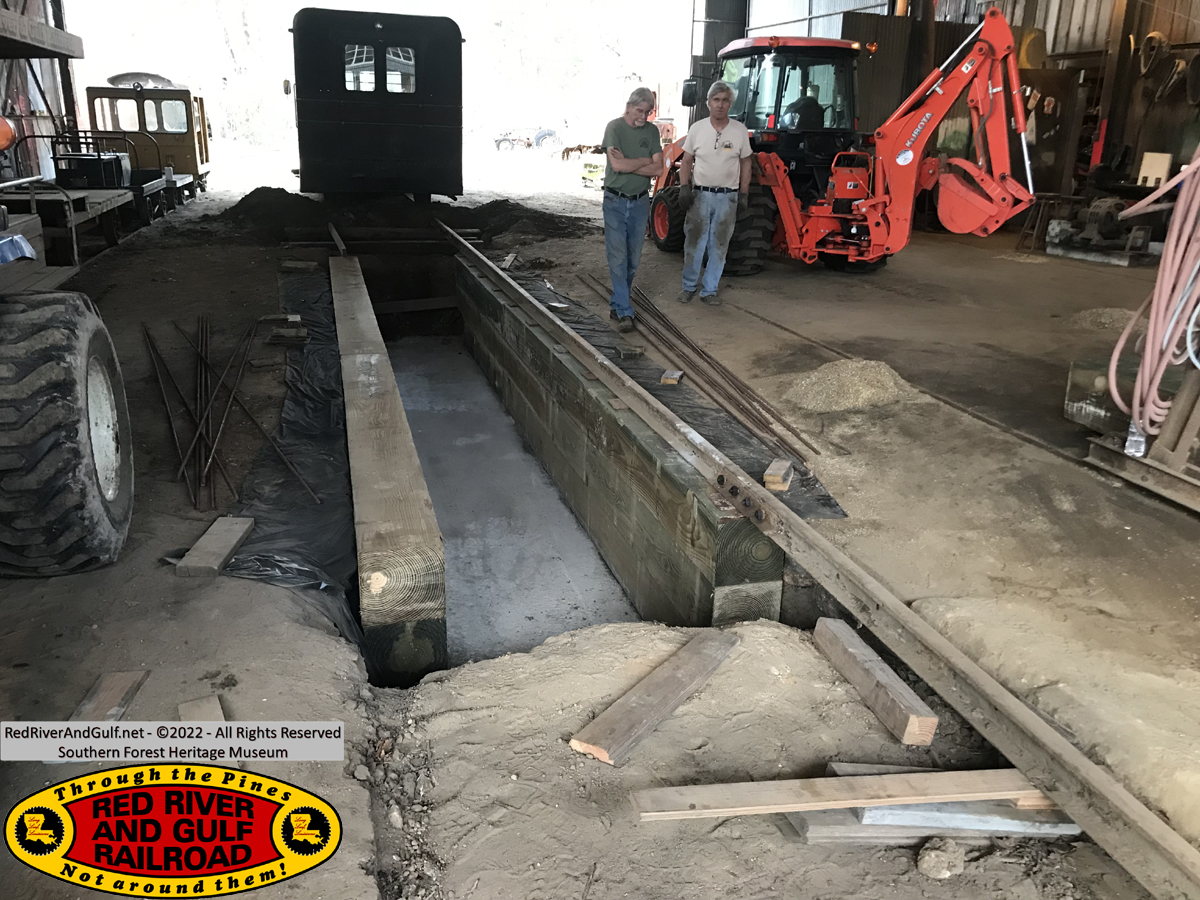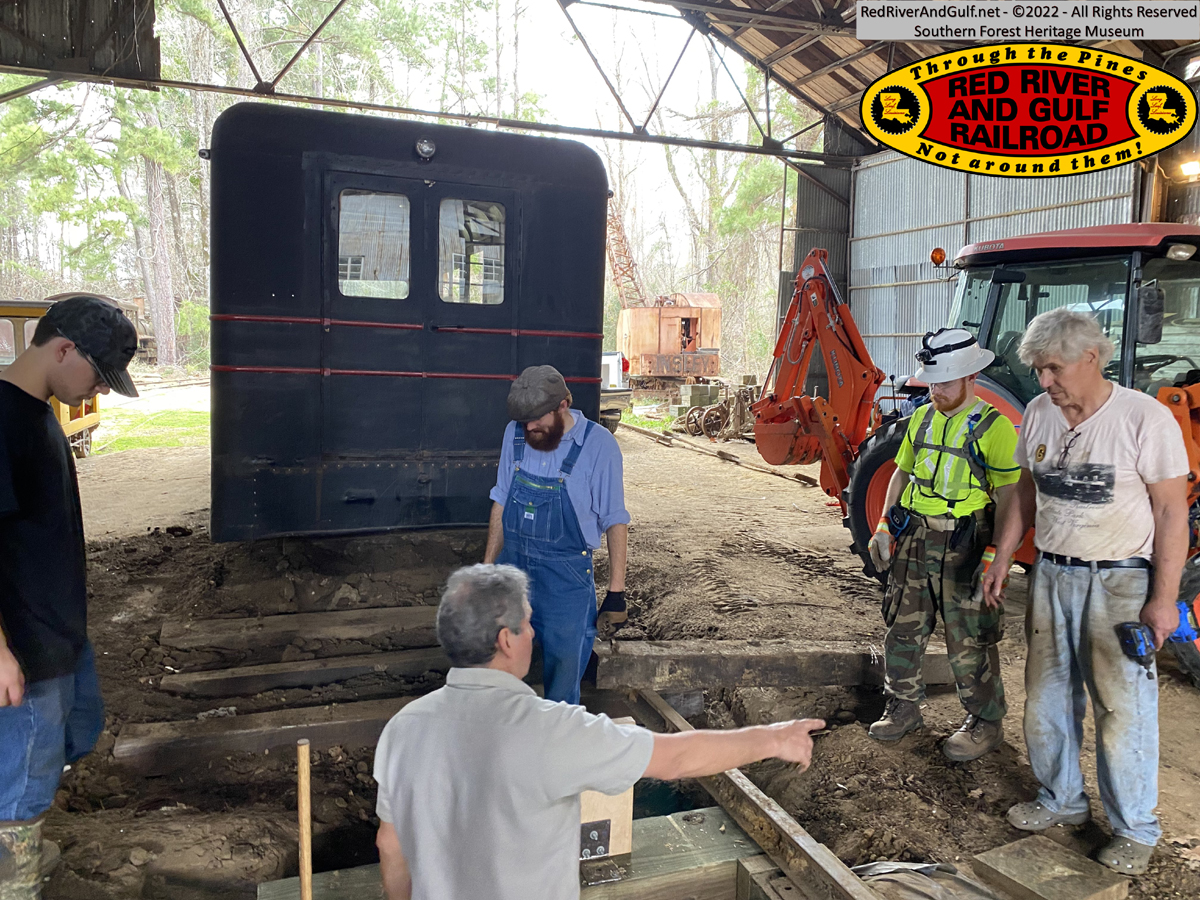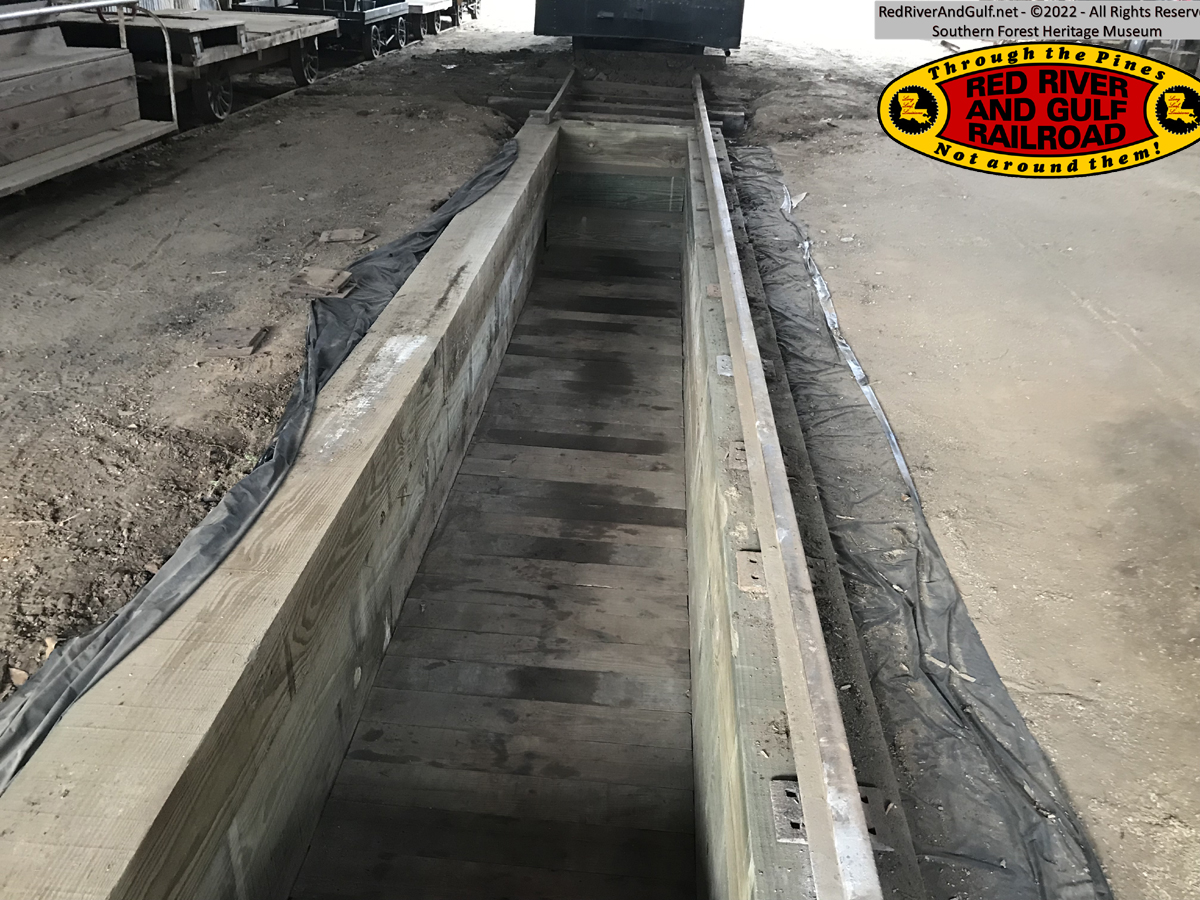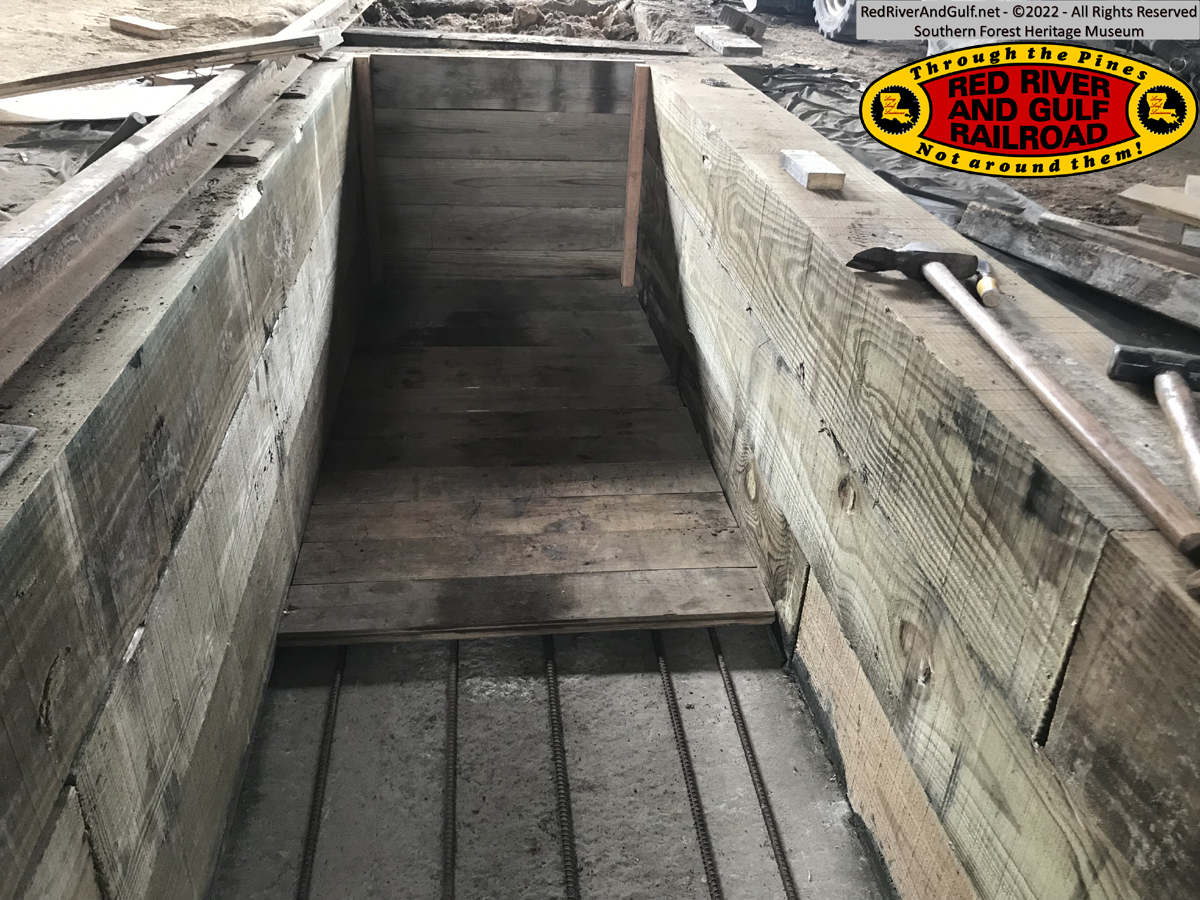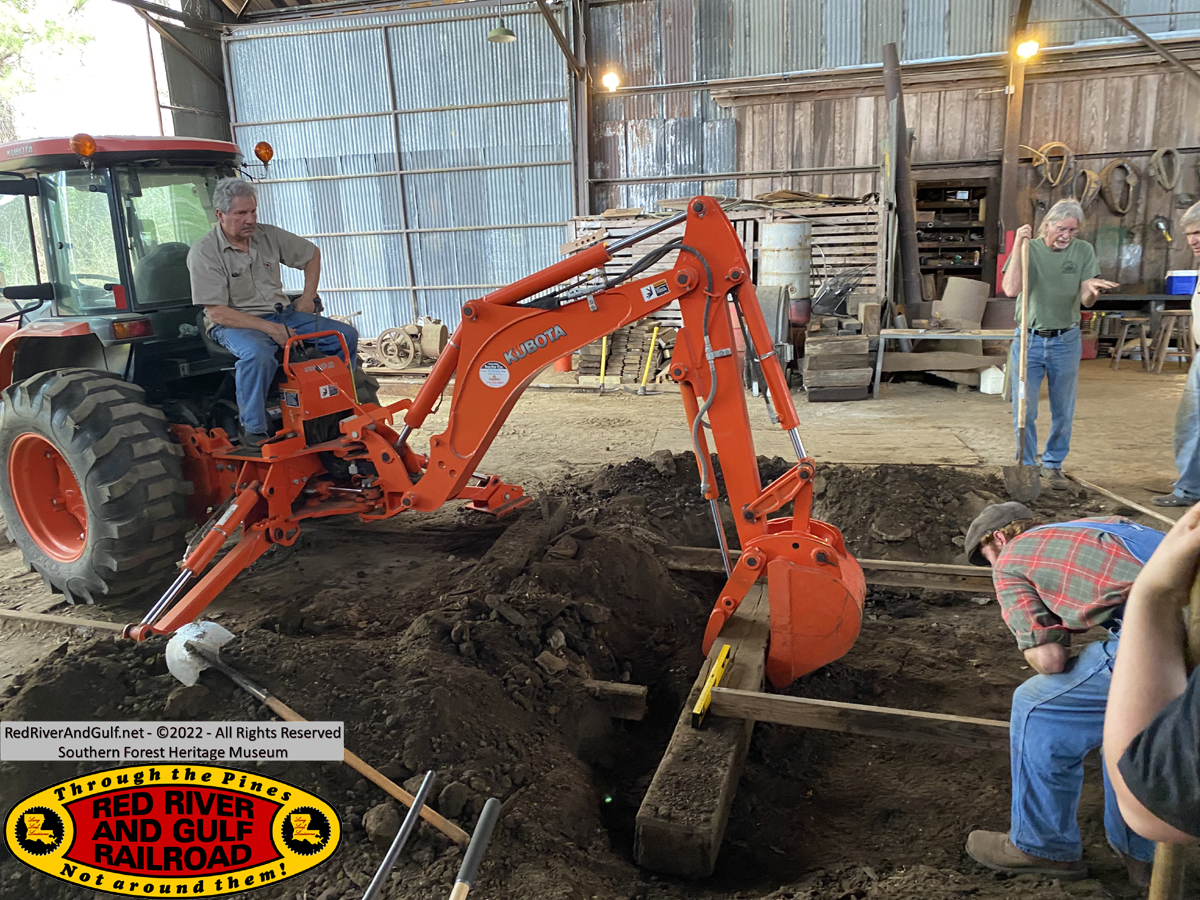|
Volunteer
Railroaders:
1. Glen A.
2. Wimbley V.
3. Carson C.
4. Walker O.
5. Clint L. Jr
6. Mike B.
7. Mike M.
8. Tucker B.
Accomplishments
1. All timbers installed in
Engine House pit
2. Pit end walls installed
3. Pit floor installed
4. Ties inserted near pit for rail installation
5. First stick of rail returned to pit and re-connected to rail
Follow-up Items to Finish
Pit project
1. Insert final ties to pit track
2. Reconnect second stick of rail over pit wall
3. Gauge track and spike down rails to pit walls
4. Caulk seam gaps
Saturday
Firstly, we’d like to recognize recent contributions from our
volunteers. Glen has used his tractor at the museum since December and
it has been invaluable in many, many projects and efforts. On the pit,
Mike B. donated a roll of vinyl ground cloth and David Hearne donated
dozens of lengths of ⅝” rebar. This rebar was used in the pit rebuild
and can be used for many other projects as well. We’ve used all the
ground cloth we needed for the pit, and most of the roll is left, so
this can be used for other projects as well. Based upon feedback from
volunteers, I donated two small hard shell ice chests that will live up
at the Engine House. These are marked for water bottles and we stocked
both with ice and water for the weekend. They are appropriately sized so
they can be taken on a motorcar when a crew heads out on the track. We
now have ice chests and first aid kits for both the Engine House and to
take with crews on the track. All are stored in the Engine House parts
room. Angela and Andrew donated the first aid kits, of which they are
substantial kits in portable travel bags.
Secondly, the end is in sight on the Engine House pit rebuild project
and the final components were completed this weekend. The grout for the
first layer of timbers was fully cured and we began in earnest
installing the remaining timbers. The second layer, with Glen operating
his tractor and using his well-devised lifting rig, was easily installed
Saturday morning. The seams were offset to avoid seam overlap and a few
timbers were cut to length with the museum chainsaw to make this happen.
Using eye hooks and ropes, the timbers were maneuvered and positioned
into the exact spots they needed to go. With the second layer in place,
Mike M. used the museum tractor to bring in two loads of dirt to
backfill the space between the timbers and the dirt. Wimbley, Carson,
and I spent much of the weekend with shovels and picks in our hands
moving dirt and the backfill was the first step of a dirt-moving
weekend. The dirt was placed between the ground and the black vinyl
membrane layer to keep moisture away from the timbers. The timbers are
treated specifically for ground contact, but we are taking every action
we can to prolong the life of this iteration of the pit.
After the backfill, we decided to drill out holes to install ⅝” rebar
that David Hearne Sr. donated to secure the first and second layer of
timbers together. This would prevent major shifting or “creep” of the
timbers over time. Glen brought a drill bit perfectly suited for the job
and a cut off saw to cut the rebar into 16” pieces. We used the large
wood drill in the Engine House tool room to complete the drilling. All
the rebar was hammered down successfully, except for one. One timber on
the second layer was now unlevel and sitting at an odd angle. Whether it
was dirt, or some obstruction in between layers, or if the rebar hit a
knot and did not hammer in straight, that we don’t know. But we spent a
good bit of time jacking, prying, raising, hemming, and hawing to
separate the second-layer timber from its first layer counterpart
without cracking the grout. Once out after lunch, we cut the rebar ends
off this timber so it would fit securely and properly back in place.
With all the main wall timbers placed, we turned our attention to
returning the rails. Before the rails could be returned, multiple new
ties were needed on both ends of the pit. Many of the old ties had
become mulch and most of the track was held in place largely by the pit
walls and the dirt. The backhoe on Glen’s tractor made quick work of
digging out the rotten ties and bringing in fresh ties. On the north
end, full length ties were used and on the south end, since two concrete
platforms line both sides of the track, shorter ties were used. In fact,
the short ties from the bottom of the old pit are being utilized in this
spot as many are still in good shape. Finally, the short stick of rail
was returned to its place and with some leveling and positioning, was
joined together on the north end of the pit. On the south end, the bolt
holes were ¼” too far out. Using Glen’s tractor and a piece of rebar,
the rail in the ground was successfully pulled toward the pit to line up
all the bolt holes. With all the bolt holes lined up, the rail was
joined and the first stick of rail was back in place.
Sunday
The final major pieces of the pit were completed on Sunday. To keep the
pit timbers from shifting inward, the south end wall was installed
inside the timbers. With the end wall installed, we backfilled dirt into
the open space beyond the pit. This accomplished two items at once. We
removed dirt from where we needed to insert new ties and filled in the
open space with dirt against the end wall. On the north end, using the
remaining pieces of 12”x12” timbers, Glen and Mike cut and installed
steps down into the pit. Glen carefully carved out the needed cuts on
the timbers to ensure a snug and smooth fit against the ground and the
wall timbers. As the steps were being installed, ties were being
inserted on the south end for the rails by Wimbley, Walker, Clint, and
I. This involved shoveling the dirt toward the pit, removing the rotten
ties, and bringing in the short ties. The ties were not quite short
enough, being 6 foot 3 inches, and three inches needed to be sawed off
in order to fit the ties in the 6 foot gap between the concrete floor
pads.
With the pit steps finished, Glen took the ceremonial first steps and
all were glad to see it! A small opening was left to keep the drain pipe
open and clear. To install the floor, more of Dave Hearne’s donated
rebar was placed at the bottom of the pit. Then the tongue and groove
flooring from the old pit was cut to length and installed over the
rebar. The gap between the wood flooring on the rebar and the concrete
will allow water to move toward the drain pipe and will prolong the life
of the flooring. To wrap things up, the sawdust was collected into an
empty garbage can and given a plywood cover. The junk ties and tie mulch
was hauled off to the burn pile in the museum tractor. A general cleanup
was undertaken to keep the workspaces clear and clean.
A job well done to everyone! Thank you all for the effort to push this
project to the finish line!
-Tucker "Who Dat" Baker
RR&G Road Master
|
